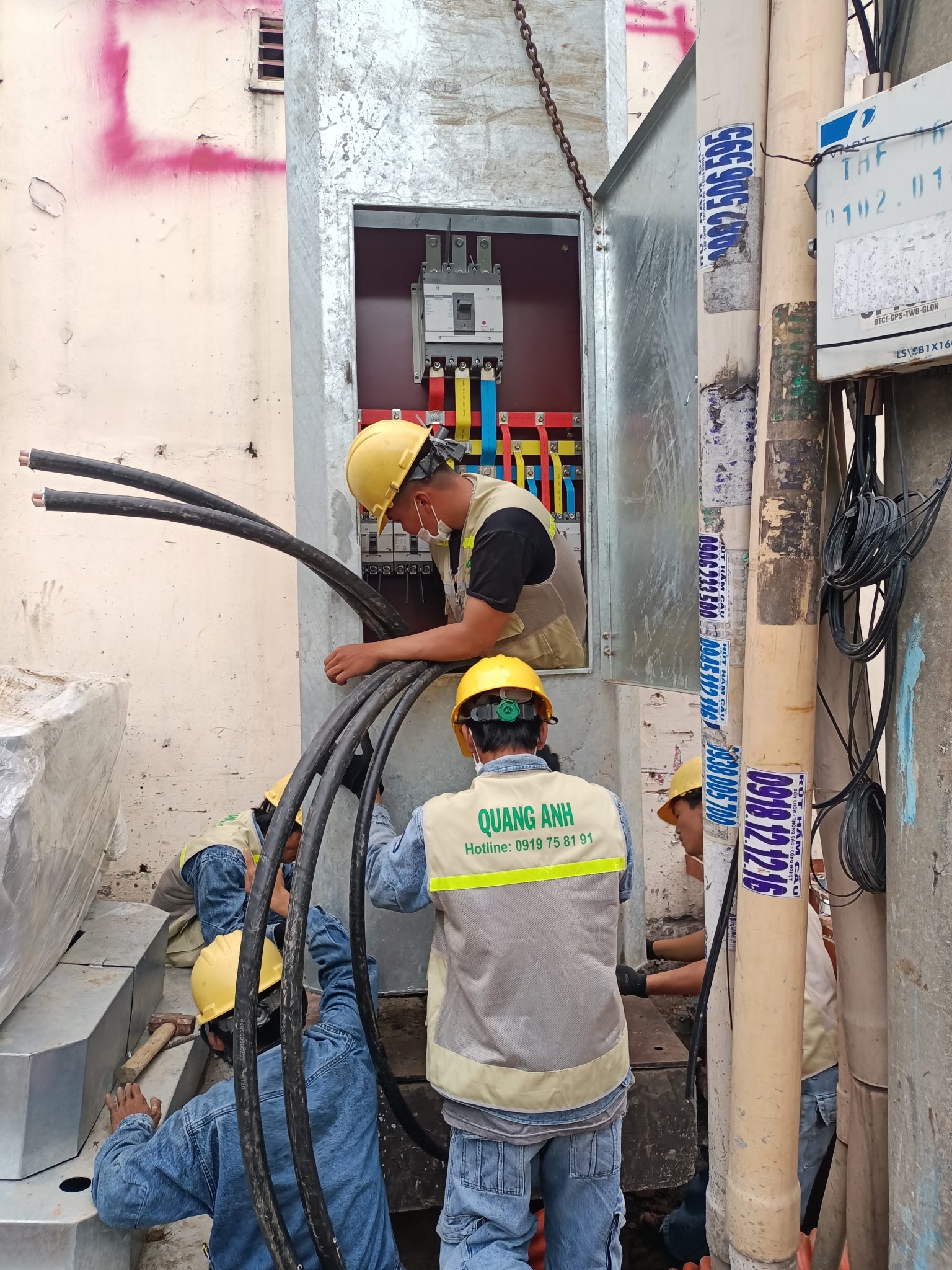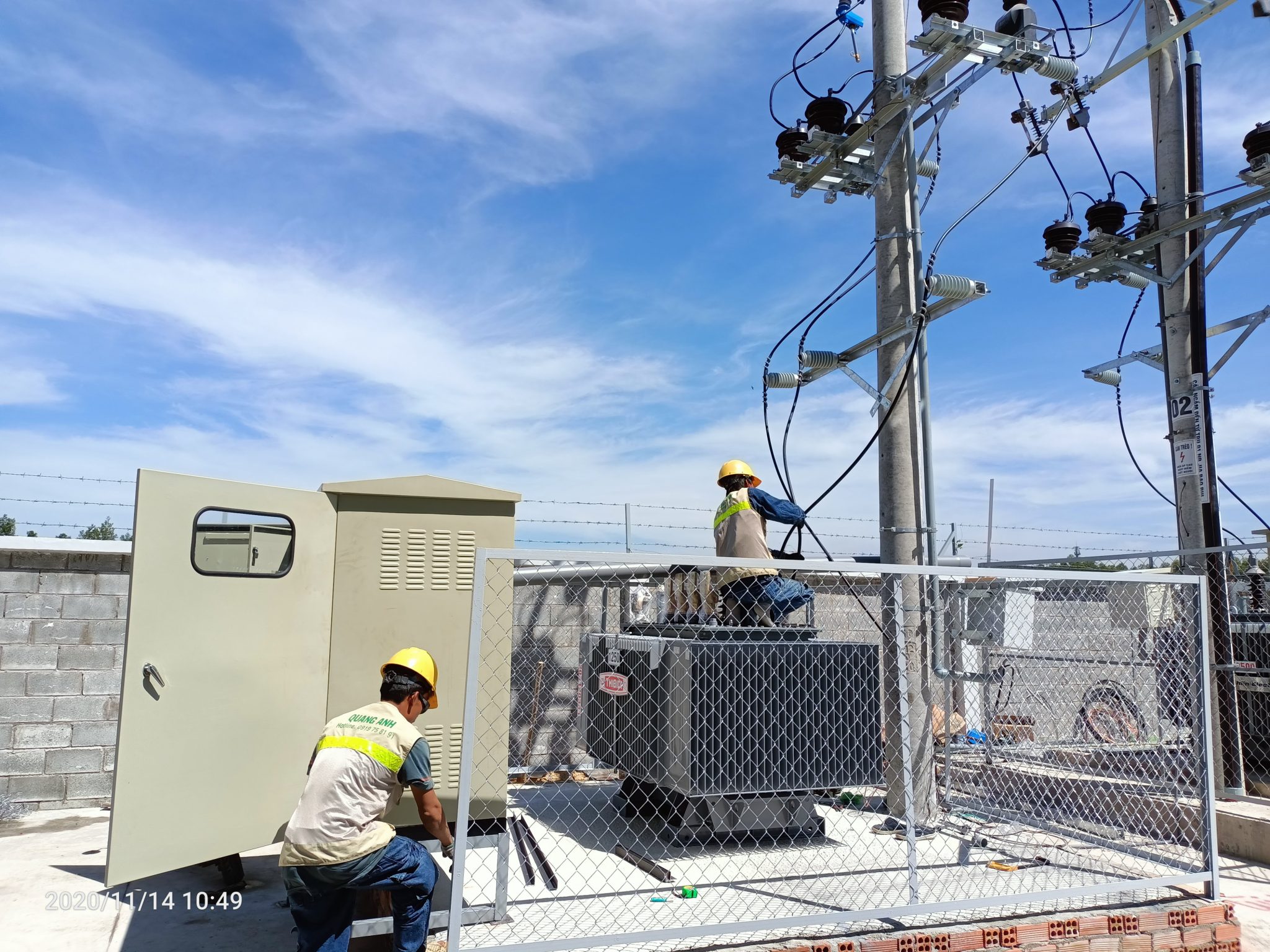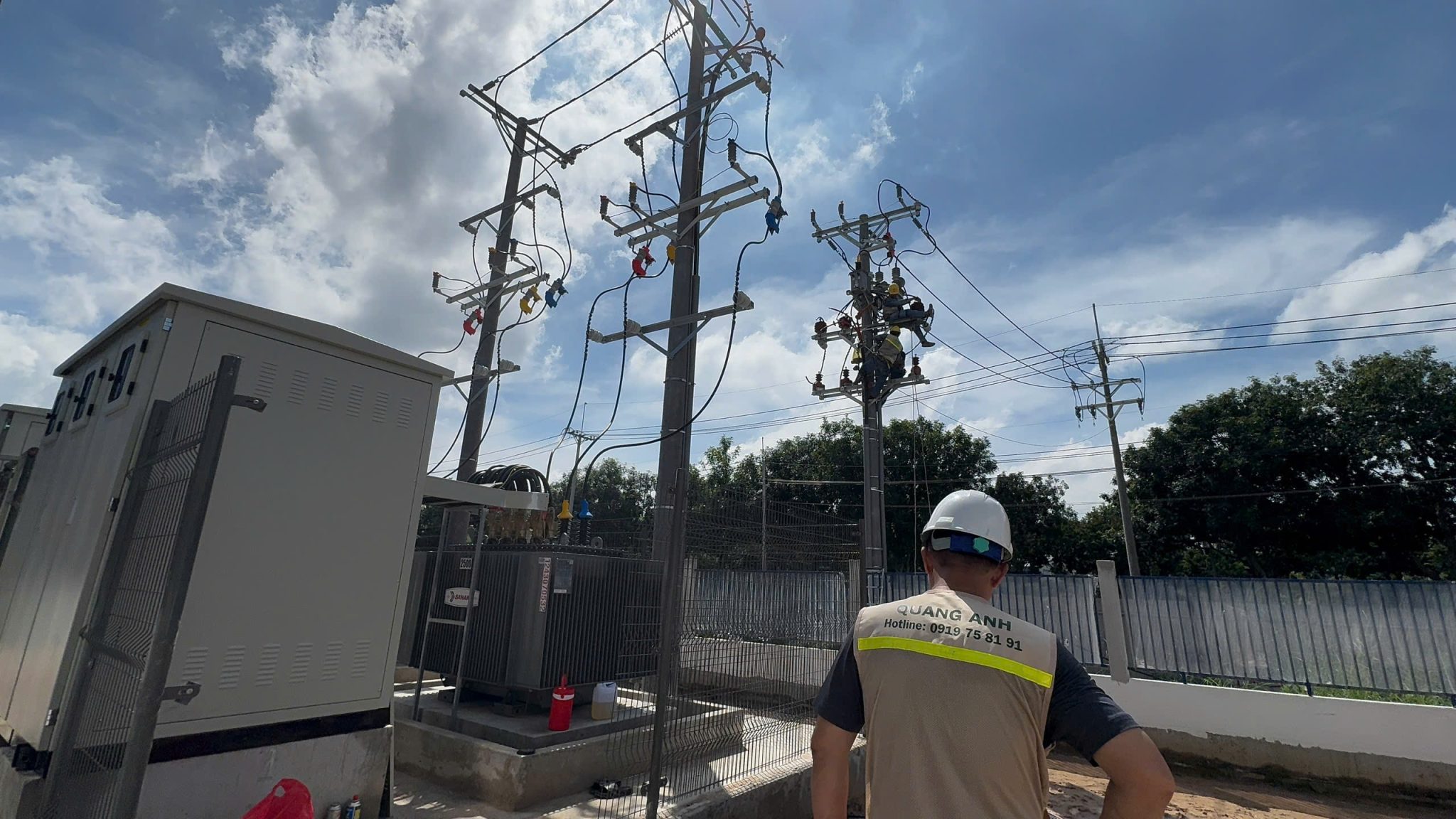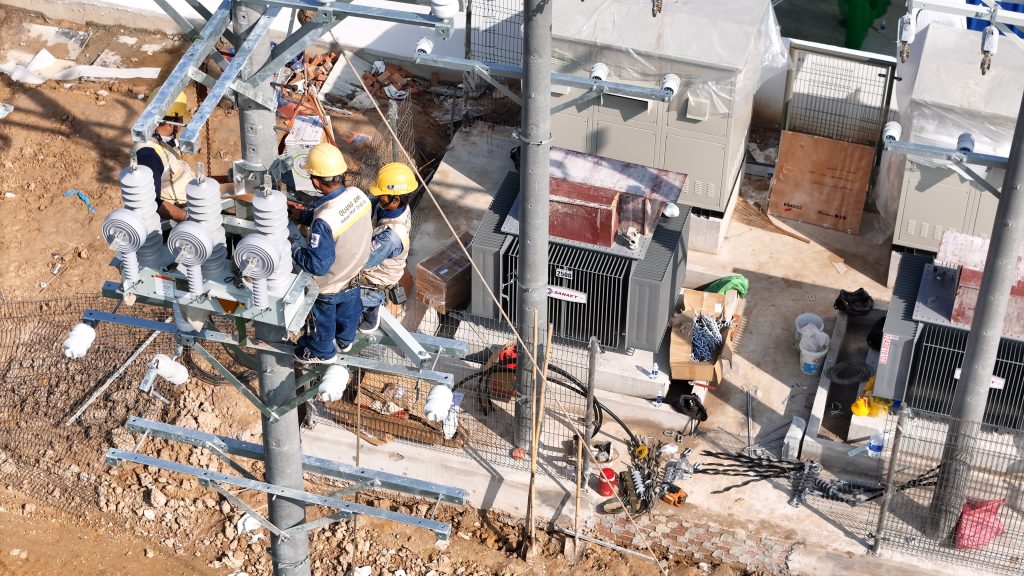News
Transmission and Distribution Substations in the Power System
Substations are essential components in the power transmission and distribution system, responsible for adjusting and transforming voltage from high to low levels to supply the consumers.
Transmission Substation: Roles and Equipment
Transmission substations primarily receive power at high voltage levels such as 110kV, 220kV, and transform it into intermediate voltage such as 22kV, 35kV to transfer it to distribution substations. With capacities over 200 MVA, these substations usually operate at high loads and are located outdoors due to their large size. Primary equipment includes transformers for transmission, protective switchgear, and lightning arresters. This substation plays an essential role in the power system, ensuring effective high-voltage supply to the consumers.
Transmission Substations play a critical role in the modern power system. Particularly in rapidly developing countries like Vietnam, optimizing power capacity and transmission efficiency is necessary to meet the ever-increasing demand.
The Role of Transmission Substations
-
Voltage Transformation:
Transmission Substations are tasked with voltage transformation, specifically reducing high voltage such as 400kV or 220kV to lower levels to minimize losses and ensure economic efficiency. Step-up substations help optimize transmission distance, while step-down substations adjust voltage before electricity reaches consumers. -
Power Distribution:
The role of distributing power from the generation source to consumption areas, such as industrial zones and residential areas, is another important function of Transmission Substations. -
Ensuring Power Quality:
By reducing voltage losses and ensuring stable transmission capacity, substations help improve the overall power quality of the system. -
Emergency Power Supply:
With protective and automatic switchgear, substations can maintain stable power supply even in events like sudden outages. -
Protection and Safety:
Equipped with circuit breakers, lightning arresters, and automatic disconnection systems to ensure safety for both the system and users.
Key Equipment in Transmission Substations
-
Transformers: The core of the substation, with high capacities of several hundred MVA, tasked with effective voltage transformation.
-
Switchgear (Circuit Breakers): This system ensures safety by disconnecting circuits during faults, protecting the system from overload and short circuits.
-
Protection and Monitoring Equipment: Relays, sensors, and SCADA systems monitor and respond in case of incidents, ensuring smooth operation.
-
Lightning Protection System: Safeguards transformers and other equipment from natural electromagnetic fluctuations.
-
Control and Distribution Cabinets: Integrated with temperature, humidity control, and power distribution to ensure efficient management.
Design Requirements for Substations
- Choose a reasonable station location to minimize losses and maximize functionality.
- Invest properly in infrastructure, focusing on stable operation and cost savings.
- Use structures and equipment suitable for the load and voltage required.
- Integrate modern protection technology to support safe management and operation.
Transmission Substations serve as the power control centers in the national grid, integrating advanced equipment such as high-capacity transformers, switchgear, protection, and advanced monitoring systems. This ensures not only an efficient power system but also a safe and reliable one, providing continuity in energy supply.

Distribution Substation: Efficient Power Delivery
Distribution substations receive electricity from transmission substations and transform it to lower voltage levels to serve households and businesses. Operating at voltage levels of 11kV/0.4kV, distribution transformers are optimized for efficient operation even when not always at maximum load. This system also includes distribution switchboards, low-voltage switchgear, and earthing systems. They ensure that electricity is transmitted stably and safely to each consumer.
Distribution Substations are indispensable components in any power system, especially when it comes to efficient power delivery to end-user networks. They play a crucial role in transforming voltage from medium (35 kV or 22 kV) to low (0.4 kV or 230 V), aligning with end consumers’ usage requirements.
Role and Function
- Voltage Transformation: Distribution Substations lower voltage from medium (e.g., 11 kV) to low voltage (0.4 kV or 230 V), facilitating easy operation of residential and small-scale production applications.
- Contribution to Transmission Efficiency: Optimize voltage increase and decrease to minimize losses in long-distance power transmission.
- Power System Safety: Equipped with protective devices such as relays, fuses, and lightning arresters, these substations protect the system from undesired incidents.
Basic Structure
A Low-Voltage Distribution Substation typically includes:
- Distribution Transformers: Can be three-phase or single-phase, playing a role in voltage transformation.
- Electric Switchgear: Includes knives, fuses for controlling and protecting the current.
- Busbar System: Distributes electricity to different load branches.
- Protection System: Lightning arresters and earthing systems to protect against residual over-voltage.
Classification of Substations
Substations are often classified based on voltage and function:
- Intermediate Substations: Convert voltage from high to medium (220 kV or 110 kV to 35 kV – 15 kV).
- Distribution Substations: Receive medium voltage (6 kV to 35 kV) and reduce it to low voltage (0.4 kV to 0.22 kV) for residential and small industrial use.
Common voltage levels include ultra-high voltage > 500 kV for very long-distance transmission, high voltage like 66 kV, 110 kV for intermediate substations, medium voltage from 6 kV to 35 kV for distribution systems, and low voltage 0.4 kV, 0.2 kV for end consumers.
Type of Distribution Substations
Small substations often use three-phase 400 kVA transformers or three single-phase 75 kVA transformers to serve areas such as buildings, residential areas, and small enterprises. Brands like Thibidi, EMC, ABB are commonly used to ensure quality and reliability.
Distribution Substations act as a key element ensuring that power is transmitted efficiently from the medium-voltage grid to a more appropriate level for all consumer applications, maintaining safety and stability for the entire power system.

General Functions of Substations in the Power System
Both transmission and distribution substations have important roles in the national power system. They ensure the transmission of electrical energy from power plants to consumers through voltage adjustment. They also play a crucial role in ensuring voltage stability and power quality. The integration of these substations in the power system not only facilitates smooth operation but also enhances overall sustainability and efficiency.
Substations are an indispensable part of the power system, responsible for converting and distributing electrical energy from high voltage levels to lower ones to meet diverse needs across different areas, including residential, industrial, and commercial sectors.
Function of Substations
- Voltage Transformation: The main function of substations is to convert electrical energy from high voltage, such as 110kV or 220kV, to lower voltage levels, typically from 22kV to 35kV. This ensures effective transmission of electrical energy to end-use areas.
- Power Supply to Regions: Substations ensure adequate power supply to residential and industrial areas. In residential areas, electricity is used for lighting, household appliances, and many other activities. Meanwhile, for industrial areas, they provide stable energy for machines and production equipment.
- Emergency Power Supply: They can supply electricity in case of malfunctions or sudden power cuts, ensuring continuous operation of critical systems.
Safety Features
- Protection and Safety Systems: Substations are usually equipped with protection systems including lightning arresters, switchgear, and automatic switches, ensuring stable and safe operation of the power system.
- Busbar and Disconnect Switch System: Used to connect station parts and ensure safety by isolating sections when needed.
Classification of Substations
Substations are classified based on their operational voltage and design to meet varying energy consumption needs. Types of substations can include gas-insulated substations (GIS) or overhead (airy) substations depending on specific applications.

Substations, with their function of transmitting and distributing electrical energy, are a determining factor in the stability and efficiency of the national power system. Investing in substations provides not only technical benefits but also strategic advantages in sustainable power supply.
Contact QuangAnhcons via hotline +84 9 1975 8191 for consultation and deployment of high-quality substation systems, ensuring efficiency and safety in power supply.
QuangAnhcons provides services for designing, installing, and maintaining transmission and distribution substations, ensuring your power system operates efficiently and stably.

 Tiếng Việt
Tiếng Việt 简体中文
简体中文 Deutsch
Deutsch 日本語
日本語 한국어
한국어 ไทย
ไทย Русский
Русский Français
Français
